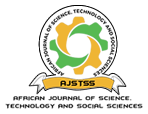A review of techniques for morphological analysis in natural language processing
DOI:
https://doi.org/10.58506/ajstss.v1i2.11Keywords:
natural language processing, morphological segmentation, finite state transducerAbstract
Natural language is a crucial tool to facilitate communication in our day-to-day activities. This can be achieved either in text or speech forms. Natural language processing (NLP) involves making computers understand and process natural language. NLP has enhanced the way humans interact with computers, from having computers use speech to talk to humans as well as having computers translate human speech. Apart from speech, computers also create and understand sentences in natural language in a process called morphological analysis. Morphological analysis is an important part in natural language processing, being applied as a preprocessing step in most NLP tasks. Morphological analysis consists of four subtasks, that is, lemmatization, part-of-speech (POS) tagging, word segmentation and stemming. In this paper, we explore in detail each of these tasks of morphological analysis. We then evaluate the techniques used in this NLP field. Finally, we give a summary of the results of each of these techniques.


